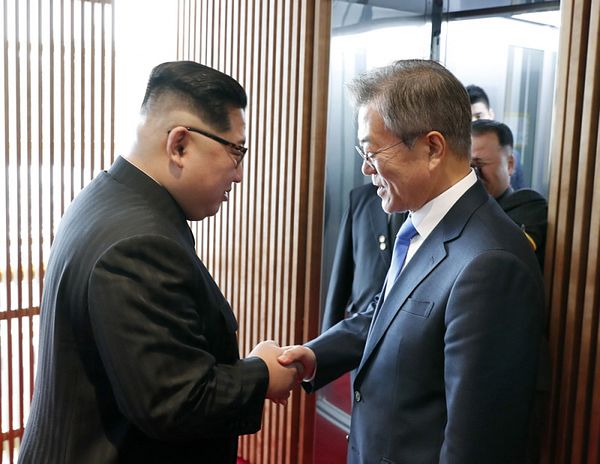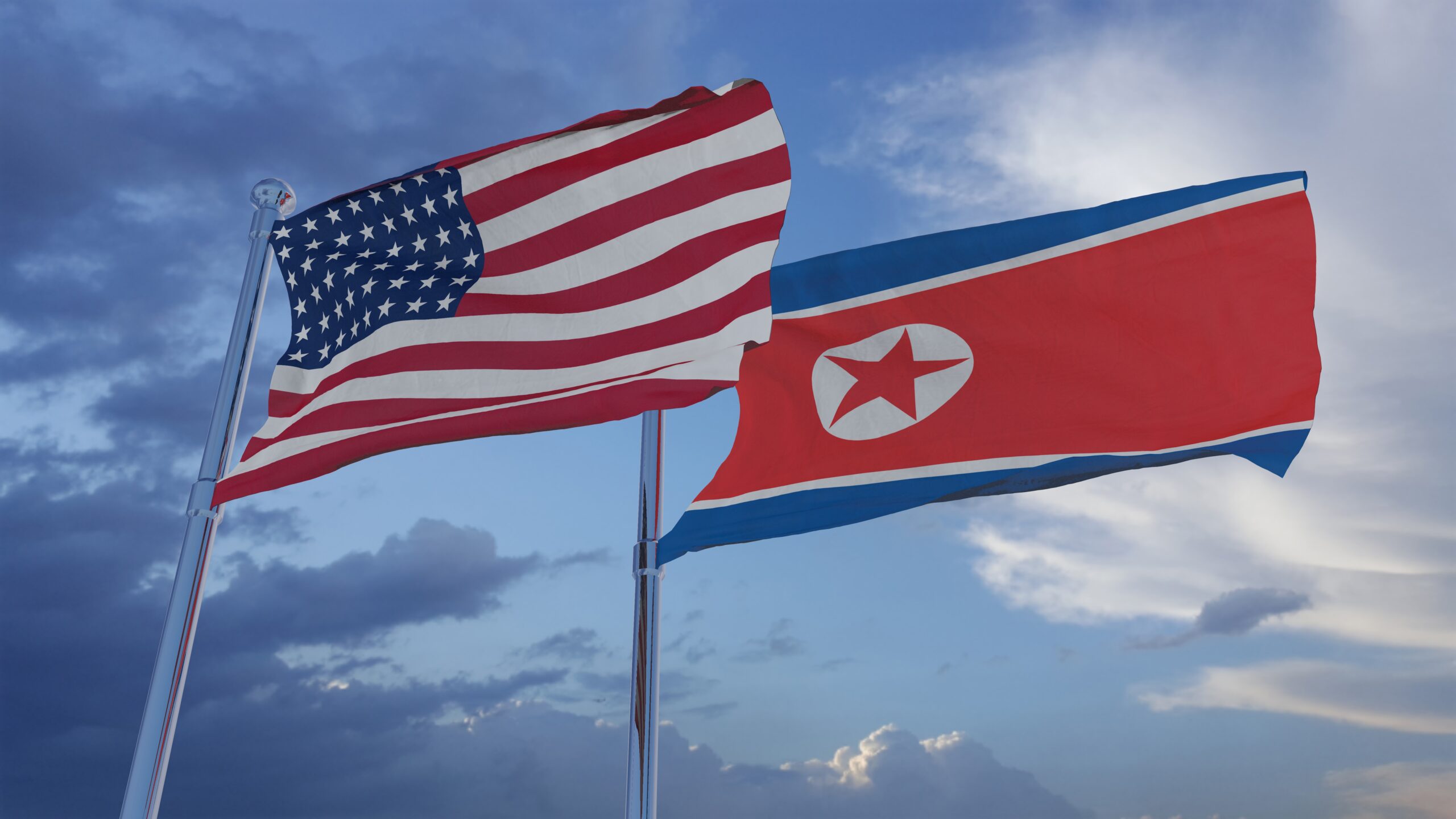Moon Jae-in’s Stalled Odyssey to Peace in Korea
THE DIPLOMAT
APLN Vice Chair Moon Chung-in discusses the successes and challenges of ROK President Moon’s Korea Peace Initiative in achieving a nuclear-weapons-free Korean peninsula. The original post is available on The Diplomat website here.
President Moon’s Korea Peace Initiative has faced mixed results and daunting challenges, but there are no better options.
Following his inauguration in May 2017, President Moon Jae-in embarked on his ambitious Korea Peace Initiative (KPI), which aims to achieve a nuclear weapons-free, peaceful, and prosperous Korean Peninsula. It was guided by three principles. The first is the primacy of peace and a resolute opposition to war, be it preemptive or preventive. For Moon, even unification is inconceivable without first securing peace. A commitment to “no nukes” is his second principle. Given his belief that South Korea cannot peacefully co-exist with a nuclear North Korea, he has emphasized the parallel pursuit of denuclearization and a peace regime on the Korean Peninsula. The third principle is “no regime change” in the North, which, Moon believes, is neither feasible nor desirable.
In following through on these principles, Moon has employed four strategies: peace-keeping, peace-making, peace-building, and proactive diplomacy. The peace-keeping strategy refers to efforts to prevent the outbreak of war through military deterrence and alliance with the U.S. Having experienced heightened military tensions in 2017, peace-keeping has become the core component of his initiative. Moon has also pursued a peace-making strategy that has two components: a reduction in inter-Korean military tensions and confidence-building in the short term and the transformation, in the long term, of the armistice agreement into a lasting peace regime through the adoption of an end-of-war declaration and a peace accord among the concerned parties. The strategy of peace-building is to foster peace through economic exchange and cooperation with the North, which he characterizes as a “peace economy” (pyonghwa gyeongje). Priority has been given to the formation of a Korean Peninsula economic community through railway reconnections, energy networks, and overall economic cooperation, including the resumption of the Kaesong Industrial Complex and the Mount Kumgang tourist zone. Finally, Moon has pushed for proactive diplomacy by facilitating inter-Korean and North Korea-U.S. dialogue, as well as seeking close consultation and cooperation with China, Japan, and Russia.
The KPI has produced mixed results. It was instrumental in turning the year of acute crisis in 2017, which was triggered by the North’s sixth nuclear test and a series of ballistic missile tests, into a year of hope for peace in 2018, as evidenced by the two inter-Korean summits and the historic first North Korea-U.S. summit in Singapore. The North suspended its nuclear and ICBM tests and has complied with the military agreement on tension reduction and confidence-building. Moon and North Korean leader Kim Jong Un, who met at Panmunjom on April 27, 2018, declared to the world that “there will be no longer war on the Korean Peninsula, and a new age of peace has opened.” Indeed, peace seemed near, and high expectations prevailed on a coming end to protracted war in Korea, underscoring what appeared to be the triumph of the KPI.
However, the upbeat mood did not last long. Since the Hanoi summit on February 28, 2019, at which President Donald Trump and Chairman Kim Jong Un failed to reach a compromise, the overall situation on the Korean Peninsula has turned sour. Pyongyang retreated into seclusion. In her statement on June 4, 2020, Kim Yo Jong, sister of the North Korean leader, who played a key role in reviving inter-Korean relations, announced the ending of inter-Korean relations and warned of a series of hostile actions. Pyongyang subsequently terminated all channels of communication with Seoul and even demolished the joint liaison office building in Kaesong on June 16, 2020, which served as a symbol of inter-Korean cooperation. North Korea-U.S. relations have also stalled. Pyongyang has persistently rejected subsequent calls by Washington for dialogue. The current outlook for the Korean Peninsula is now marked by suspended communication, a failure to engage in denuclearization talks, and a precarious peace, dealing what appears to be a critical blow to the KPI.
What went wrong? Moon’s peace-making strategy, framed around an end-of-war declaration and progress toward a peace regime, fell prey to stalled denuclearization negotiations. Washington’s maximum pressure campaign and sanctions against the North also blocked Seoul’s attempts to implement inter-Korean agreements on exchange and cooperation, nullifying his peace-building efforts. Pyongyang began to suspect Seoul’s intention, will, and autonomy in carrying out inter-Korean agreements, and subsequently, its disappointment and anger deepened.
Contradictions within the KPI also became problematic. North Korea’s assertive military moves in 2017 drove the Moon government to respond in kind by strengthening missile-defense capabilities and its alliance with the United States. Seoul has not only acquired F-35 stealth fighters, Global Hawks, a high-altitude unmanned surveillance vehicle, and other advanced weapons, but also continued South Korea-U.S. joint military training and exercises. Such moves directly contradict the mandates of peace-making and peace-building, inviting criticism from Pyongyang.
Washington’s stance has also been a source of the current stalemate. Three rounds of summits with the North notwithstanding, the Trump administration intensified rather than softened its maximum pressure campaign, leading Pyongyang to perceive that its good behavior was being reciprocated with punishments. The current Biden administration has expressed its hopes of reaching a diplomatic breakthrough with the North through a calibrated, pragmatic, and gradual approach. Furthermore, Biden has shown his sincerity by promising to honor the Panmunjom Declaration and the Singapore Statement and to support inter-Korean engagement, dialogue, and cooperation in his summit with the South Korean president on May 21. He even seized on that occasion to make a surprise announcement on the appointment of a special U.S. envoy for North Korea. But the North has not responded to these moves, most likely because of the absence of concrete incentives to engage in exchanges.
Finally, domestic variables might have prevented the North from engaging with the South and the United States. The North is currently facing severe internal challenges such as COVID-19, food shortages, and the economic downturn resulting from protracted sanctions. It simply cannot afford to engage with the outside world. This can be inferred from Pyongyang’s behavior. The North sent some positive signals in favor of dialogue with the South in September 2020 and May 2021, but concerns over the pandemic aborted those moves. This represents the fundamental limit to Seoul’s proactive diplomacy.
These daunting challenges notwithstanding, however, the peace initiative is the right choice because there are no other feasible alternatives. Whereas sanctions and maximum pressure have been of limited effect in compelling a change in North Korea’s behavior, military actions are unthinkable to South Koreans. Negotiated settlement of the North Korean nuclear quagmire, peace-making, and peace-building are the mandates of our time based on common sense and historical consciousness.
Good news came on July 27, the 68th anniversary of the Armistice Agreement of the Korean War. The North and the South restored all channels of communication and pledged to promote trust and reconciliation. Judging by the pandemic situation and the ROK-U.S. joint military exercise planned in August, there are still uncertainties. But they should take this opportunity for improving inter-Korean relations. North Korea should look beyond its domestic issues and seek compromise while setting aside its unilateral demands. Despite the risk of COVID-19, the North should come out and engage with South Korea and the U.S. more actively. Washington also needs to demonstrate a more flexible and pragmatic attitude with concrete incentives. The North will not be fooled by simple rhetoric. The Moon government is structurally constrained, not only because there are only eight months left in its tenure, but also because of the politics of presidential elections, whose campaigning starts in September. Nevertheless, Moon’s government should seek more creative diplomacy to turn the situation around.
To paraphrase Leo Tolstoy, there might not be peace in the real world but only its mirage on the horizon. Yet, we must cherish it and ultimately turn it into a real peace.
Image: The Diplomat | Cheong Wa Dae




